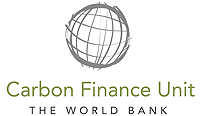Overview
The Romania: Afforestation of Degraded Agricultural Land Project consisted of afforestation (manual and mechanized) of degraded agricultural lands in the southwest and southeast of the Romanian Plain and of ecological reconstruction of part of the Lower Danube floodplain (Braila and Olt Counties) through planting of native species. The total afforestation area included in the project was 6,728 hectares (net of roads and buildings etc.) and is spread across seven counties. The project conformed with overall state forest policy and strategy which identifies degraded agricultural lands for afforestation. There is an estimated 3 million hectares of degraded agricultural lands in Romania. The project’s degraded lands have been worked intensively for agriculture since the early seventies, coinciding with the extension of the drainage of the river Danube. Initially, these lands produced a range of crops including cereals, vegetables, fruits and grapes. Through excessive working and lack of investment in irrigation infrastructure and maintenance, the lands have become degraded and subject to erosion and are now uneconomic for crop production and are either used mainly for pasture or abandoned.
Benefits
- Afforestation of degraded agricultural lands in the southwest and southeast of the Romanian Plain
- Ecological reconstruction of part of the Lower Danube floodplain (Braila and Olt Counties) through planting of native species
